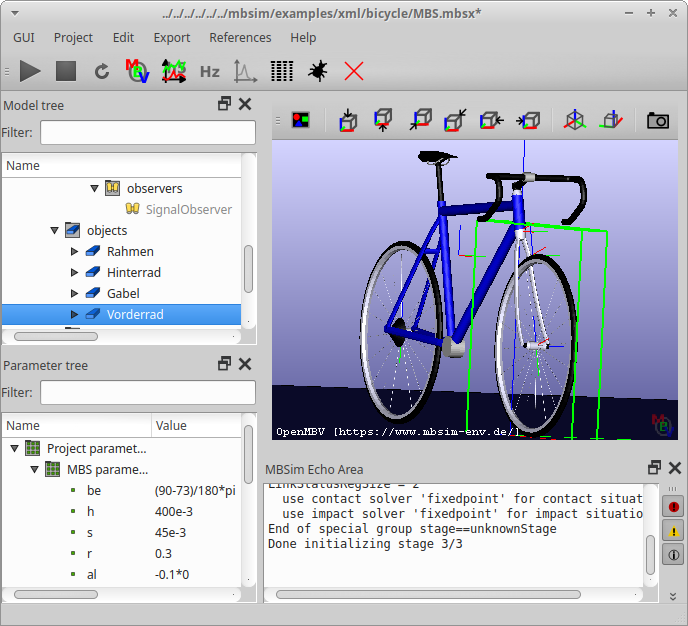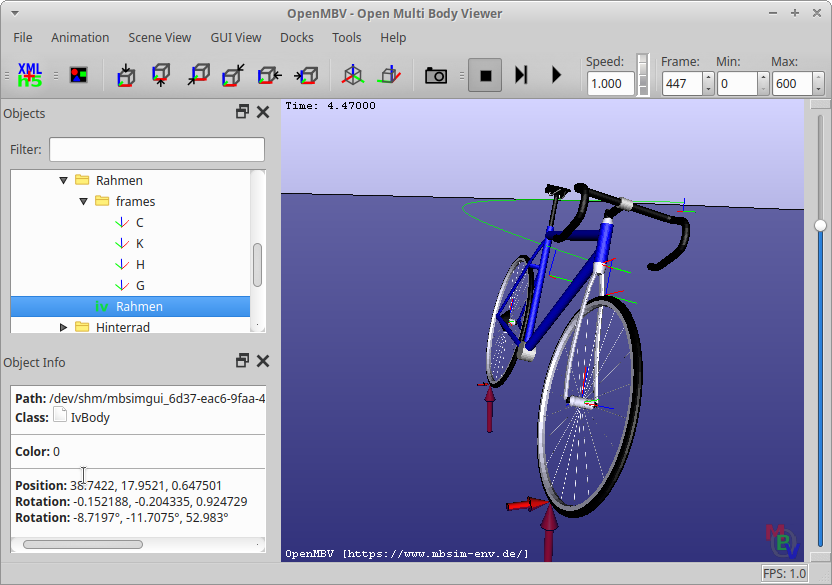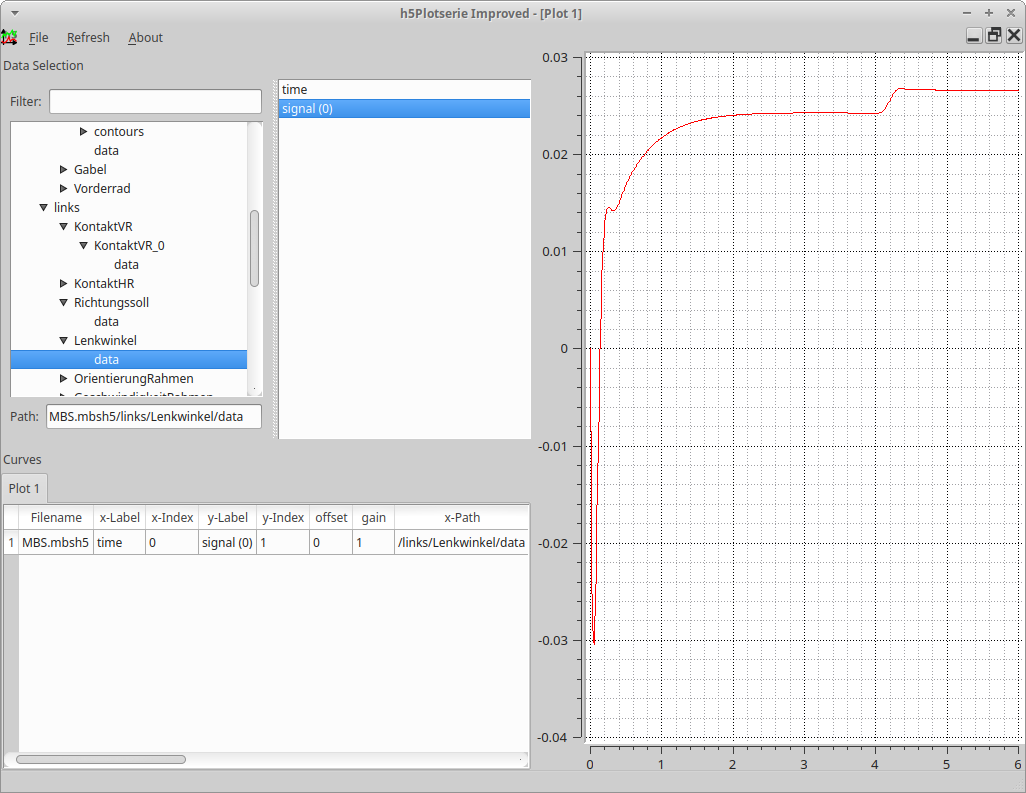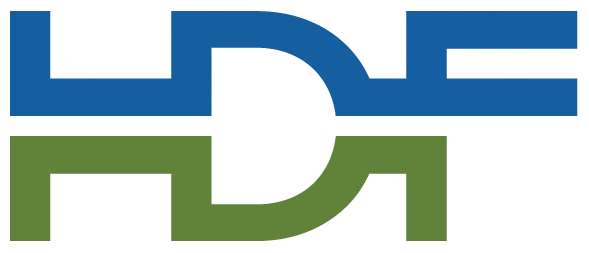The MBSim Environment
Introduction
The MBSim Environment provides tools for simulation, visualization and analysis of smooth and non-smooth multibody systems.



- Graphical model design
- Parametric model setup
- Generate arbitrary user functions by use of symbolic expressions
- Motion view in 3D
- Output data plotting
- Modules for control, hydraulics, physics and flexible bodies
- Model exchange via Functional Mock-up Interface (FMI)
- Full extensibility via C++ or Python interface
Used (Quasi)-Standards
The following (quasi)-standards can be utilized by MBSim:| Icon | Standard | Used for |
|---|---|---|
| Functional Mock-up Interface | Export of the complete model using FMI 1.0 for Co-Simulation or FMI 1.0 for Model-Exchange | |
 |
Hierarchical Data Format - HDF5 | All data output is store using HDF5: time series of dynamic analysis; eigenvalues and eigenvectors of eigen analysis; frequencies and mode shapes of modal analysis; system-, input-, output- and feed-through matrix of LTI system exports |
 |
FRD files | CalculiX result files as input for flexible bodies |
| Pacejka Magic Formula | MF-Tire/MF-Swift (TIR) | Import of tir files to parametrise tires |
History
The history of MBSim and its accompanying tools goes back to the year 2007. It is continuously improved and extended since then.
- 2007
- Start of the MBSim project at the Institute of Applied Mechanics at the Technical University of Munich . Initial commit of MBSim and fmatvec as internal subversion repositories.
- 2008
- Birth of HDF5Serie as an internal subversion repository. Switching of the MBSim output files from ASCII to HDF5.
- 2009
- Release of MBSim, HDF5Serie and fmatvec as an open source project on the hosting platform BerliOS .
- 2009
- Birth of OpenMBV as an internal subversion repository as an improved and modernized successor of AMVis .
- 2009
- Birth of h5plotserie, the GUI for time-series post-processing of MBSim.
- 2009
- Birth of MBSimXML, the XML based model format of MBSim.
- 2011
- The hosting platform BerliOS closes. Move of MBSim, OpenMBV, HDF5Serie and fmatvec to the hosting platform Google-Code .
- 2012
- Birth of MBSimGUI, the GUI of MBSim.
- 2015
- The hosting platform Google-Code closes in 2016. Birth of the GitHub organization mbsim-env . Move of MBSim, OpenMBV, HDF5Serie and fmatvec to the hosting platform GitHub .
- 2016
- Birth of the continous integration (CI) and nightly build system of MBSim-Env on a commercial vServer.
- 2019
- Switched the CI and nightly build system to Docker containers and switched the vServer hosting provider.
- 2019
- Support for finite element models from external FEM software.
- 2020
- Redesign of the CI and nightly build system based on Django .
- 2022
- Native support for 3D solid elements.
- 2023
- Implementation of Magic Formula for modeling motorcycle and car tyres.
- 2023
- Added a 3D stereo view (3D TV format) in OpenMBV.
- 2024
- Added a solver which allows friction to depend nonlinear on bilateral constraint forces.
- 2024
- Improved preprocessor for programmtically model setup (allow Embed on local elements).
- 2025
- Allow to define initial conditions on position and velocity level.
Dependent Tools and Libraries
MBSim and its tools and libraries make use of a lot of other 3rd-party tools and libraries during build and runtime. As MBSim itself, all these tools are free open-source tools. Special thanks goes to the following, none exclusive, alphabetical list of such tools:
Boost Coin Django Doxygen HDF5 MinGW noVNC Octave OpenBLAS Python Qt qwt SWIG XercesReferences and Users
Since MBSim is a free open-source tool which can be used without any charge and tracking most users of MBSim are unknown by us. If you are using MBSim, or some of its tools, and want to be listed here feel free to contact us providing the name and link to your organization/project/... and a few words about your usecase. It will also be welcome if you provide a link from your site to this one.
The following, alphabetical list, shows known external users and external references of MBSim: